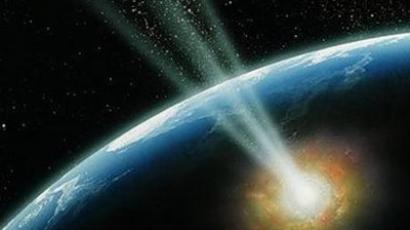Doomsday paranoia triggers private asteroid hunt

The Mayan doomsday may have passed without incident, but it's too early to relax. Astronomers have found a large asteroid heading this way. However one private firm thinks it knows how to save us.
Scientists from the University of Hawaii said that the 140 meter asteroid's will just miss Earth as the orbital trajectory of the 2011 AG5 space object will bring it within 890,000 kilometers of our planet. That’s about twice as far away as the moon.But we could still be in for a nasty surprise in 2040, if the path of the asteroid should change due to something called the Yarkovsky effect.The effect is produced as asteroids or meteoroids absorb energy from the sun and re-radiate it into space as heat. This could slightly alter the space object’s trajectory. To put it in perspective, comparable chunk of rock hit an unpopulated are in Siberia in 1908 producing energy equivalent to 1,000 times the bomb dropped on Hiroshima.To avoid catastrophe, a Californian based company is cataloguing 90 percent of the near-Earth asteroids to warn of and possibly deflect any threats.The B612 Foundation has partnered with Boulder, Colorado based Ball Aerospace to come up with a $500 million infrared space telescope capable of discovering these celestial bullets. The mission is called the Sentinel.Changing an asteroid’s trajectory is possible given enough time, Ed Lu, head of B612 Foundation, has told the NY Times. But the problem lies in the fact that scientists are only aware of a fraction of cosmic objects that could destroy the Earth. “We're driving around the solar system with our eyes closed, essentially, and that seems kind of crazy, right?" Lu said. "Because these things do hit the Earth.”The venture has developed a monitoring spacecraft the size of a small truck that has passed a preliminary technical review, which it hopes to launch on a SpaceX rocket by 2018.The idea behind the Sentinel is to create a Venus-like orbit around the sun, constantly taking pictures as it explores the sky. The founders predict the telescope will capture 10,000 asteroids a month which is the number that has been catalogued so far. The mission will last at least five-and-a-half years.














